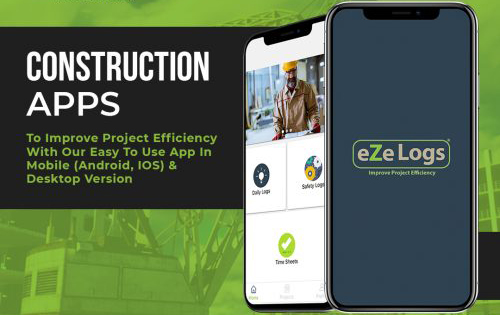Project planning software has revolutionized how businesses and organizations plan and oversee projects. Since 2023, project management software is becoming more prevalent due to its many benefits over traditional approaches.
This insightful comparison between software vs traditional methods will highlight the many advantages associated with project planning software such as increased efficiency, reduced costs and enhanced collaboration. This comparison will also highlight potential disadvantages associated with project planning software use, including its need for specialized training and the risk of data loss.

Finally, this comparison will present an overview of the current market for project planning software products and features, with special focus on popular products. By the conclusion of this comparison, readers will have gained more of an understanding of project planning software as an asset and hindrance and be better equipped to make an informed decision as to which method will best serve their organization.
Project Planning Software Offers numerous advantages.
Project Planning Software can be an invaluable asset to any organization, aiding with project execution by saving both time and money in planning processes. Here are a few advantages associated with using such software:
1. Increased Efficiency: Project planning software can simplify and expedite the planning and execution process, making multiple projects simpler to oversee at once while increasing efficiency by decreasing time spent per task. As such, project planning software has the power to help reduce workload for professionals while at the same time improving project efficiency by saving them both time and effort.
2. Increased Visibility: Project planning software provides project managers with a clear picture of project progress and can assist them with tracking its progression or recognizing any issues as soon as they arise – helping ensure projects are finished on schedule and under budget.
3. Automation: Project planning software has the ability to automate many aspects of project planning, from scheduling tasks and assigning resources, to tracking progress. This can reduce manual work required while freeing up more time for more important activities.
4. Improved Collaboration: Project planning software can assist team members by making it easy for them to share information and work towards common goals together. It ensures everyone stays on the same path towards reaching the same destination.
Project planning software can be an invaluable asset to any organization, helping streamline project planning and execution to save both time and money while increasing visibility, automation, collaboration and timeliness to ensure projects are completed on schedule and under budget.
Limitations of Traditional Project Planning Methods
Traditional project planning methods have long been utilized and proven themselves effective; however, they do come with certain limitations that should be kept in mind when planning any given project.
Traditional project planning methods tend to be time consuming and manual-heavy, making them impractical for projects requiring quick turnaround times or tight deadlines. Furthermore, such traditional approaches may make scaling up or down difficult depending on project size/complexity considerations.
Second, traditional project planning methods tend to be rigid and difficult to adapt when changes to scope or timeline occur, potentially leading to delays and cost overruns if the plan doesn’t reflect this change in requirements.
Traditional project planning methods may make it challenging to monitor, making it hard to spot potential risks or issues before they turn into full-fledged problems.
Traditional project planning methods may prove effective in many instances, yet their limitations must also be taken into consideration when planning any given endeavor.
Software Versus Traditional Methods: An Examination Comparison
When it comes to accomplishing tasks, traditional and software-based methods offer two primary options for accomplishing them. Each has unique benefits and drawbacks that must be understood to make informed choices for yourself. In this article we compare traditional with software-based solutions so you can make an educated choice.
Traditional methods involve performing tasks manually without resorting to software applications or hardware solutions, providing another viable option for those who prefer working with their hands while not needing all of the features that software offers. Furthermore, traditional methods tend to be cost-effective as no additional software or hardware needs to be purchased – though they may take more effort and take up more of your time!
Software-based methods involve using software to complete tasks. This may be an ideal option for those needing the added features provided by software; software-based solutions tend to be more efficient since certain tasks can be automated or additional features made available that make processes simpler – however they may be more costly as additional software and hardware will likely need to be purchased and set up before beginning this type of approach.
Accuracy-wise, both traditional and software-based methods may provide accurate results; however, software solutions often prove superior because of additional features designed to increase precision.
Software-based methods tend to be faster than their traditional counterparts in terms of speed due to being able to automate certain tasks and provide extra features which speed up the process.
Cost-wise, traditional methods often prove more cost-efficient than software-based ones; as they don’t necessitate additional software or hardware purchases.
Overall, both traditional and software-based methods offer their own set of benefits and drawbacks; it’s crucial that we all understand these differences so as to make informed decisions when selecting one or the other for our own individual circumstances. We hope this article has provided enough clarity between traditional and software-based methodologies so we may all make more informed choices going forward.
Selecting an Appropriate Project Planning Software Solution
Finding the appropriate project planning software can be an uphill struggle, given all of your options available to you. Here are a few key factors you should keep in mind when making this important decision:
1. Features: When considering software options for project planning and management, features must first come into consideration. These could include tools such as task management, resource allocation, budgeting and reporting that help ensure successful management of any given task or initiative. It’s crucial that any chosen solution offers everything needed for effective project oversight.
2. Ease of Use: Software should be user-friendly and intuitive in terms of ease-of-use and functionality, otherwise its potential can become limited and hard to realize. Look for intuitive, user-friendly applications.
3. Cost: When purchasing software, cost should always be an important consideration. Ensure you find one with free trials or money back guarantees as this could provide better value.
4. Support: Be certain the software you select offers excellent customer support services if any problems or questions arise, quickly providing answers and solutions quickly.

By considering these elements, you can make an informed choice and select the most effective project planning software for your endeavor. Good luck with it all!
Future Trends for Project Planning Software are evident.
Project planning software has grown increasingly popular as businesses search for ways to streamline operations and boost efficiency. As technology develops further, so too will its features and capabilities – here are a few trends we anticipate seeing over the coming year:
1. Automation: Automation has become an invaluable asset when it comes to project planning software. Automation helps streamline processes, reduce errors and save time – not to mention resource allocation, task scheduling and budgeting capabilities!
2. Cloud-Based Solutions: Cloud-based solutions have grown increasingly popular due to their flexibility and scalability, helping reduce costs while improving collaboration.
3. Artificial Intelligence: Artificial intelligence (AI) has quickly become one of the key features in project planning software, providing predictive analytics, resource allocation and task scheduling functions as well as risk management and decision-making assistance.
4. Mobile Accessibility: As more individuals rely on their smartphones or other mobile devices for project planning software access, mobile accessibility becomes ever more essential to improving collaboration and increasing productivity. It has the power to enhance collaboration while increasing overall output.
5. Integration: Businesses increasingly prioritize integration when looking to integrate project planning software with other systems and improve collaboration and workflow efficiency. Integration can streamline processes while streamlining workflow.
These are among the trends we anticipate seeing in the near future, as technology progresses further and project planning software expands with it.
The Bottom Line
Project Planning Software has revolutionized how projects are managed in 2023. It enables for more effective project administration through improved collaboration, communication and organization.
Helping teams work faster with less errors or delays – plus it enables for accurate estimates, tracking progress more closely, resource optimization as well as improved resource utilization; all making this tool an indispensable asset to project managers and teams today.


